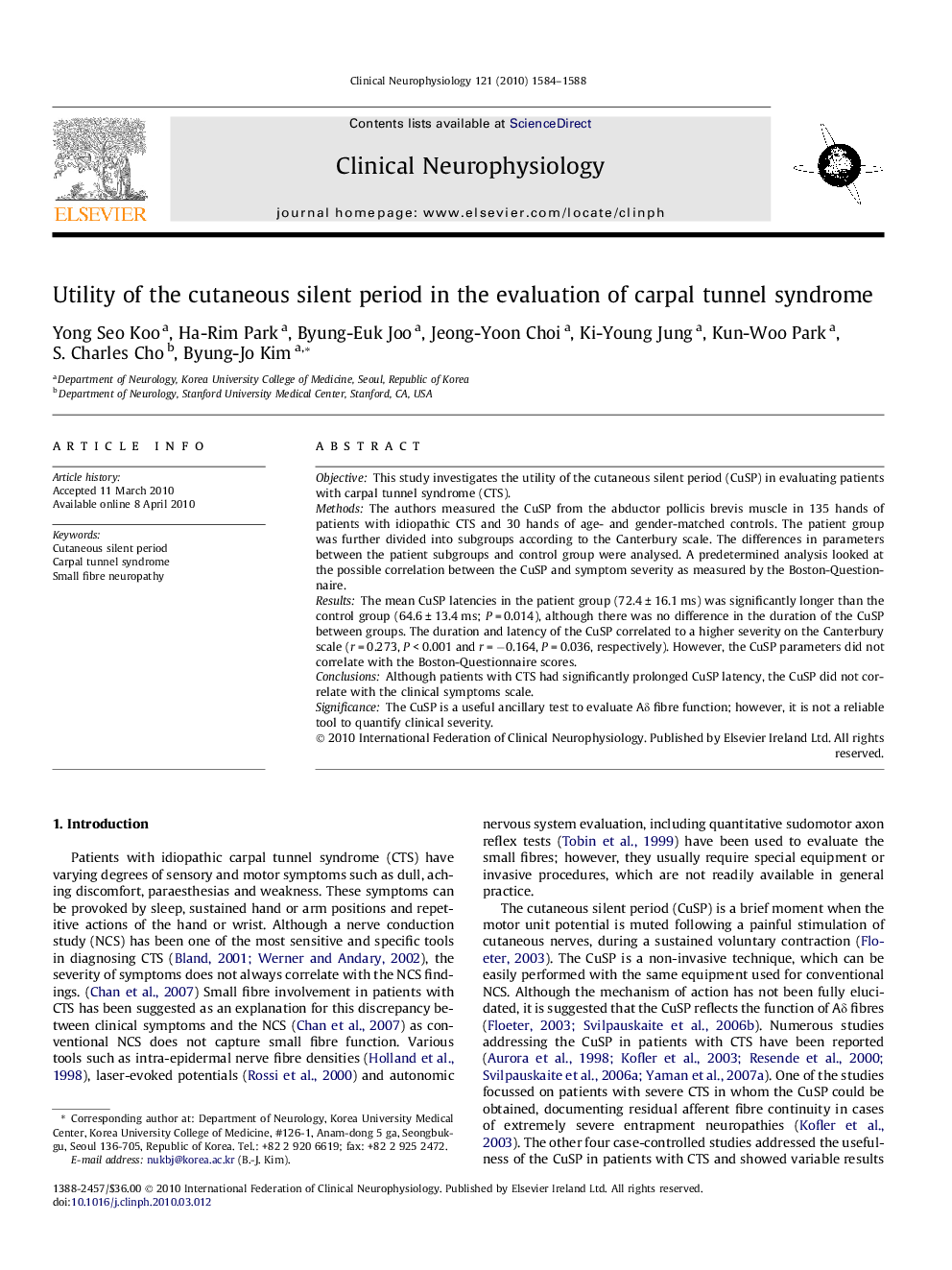| Article ID | Journal | Published Year | Pages | File Type |
|---|---|---|---|---|
| 3045606 | Clinical Neurophysiology | 2010 | 5 Pages |
ObjectiveThis study investigates the utility of the cutaneous silent period (CuSP) in evaluating patients with carpal tunnel syndrome (CTS).MethodsThe authors measured the CuSP from the abductor pollicis brevis muscle in 135 hands of patients with idiopathic CTS and 30 hands of age- and gender-matched controls. The patient group was further divided into subgroups according to the Canterbury scale. The differences in parameters between the patient subgroups and control group were analysed. A predetermined analysis looked at the possible correlation between the CuSP and symptom severity as measured by the Boston-Questionnaire.ResultsThe mean CuSP latencies in the patient group (72.4 ± 16.1 ms) was significantly longer than the control group (64.6 ± 13.4 ms; P = 0.014), although there was no difference in the duration of the CuSP between groups. The duration and latency of the CuSP correlated to a higher severity on the Canterbury scale (r = 0.273, P < 0.001 and r = −0.164, P = 0.036, respectively). However, the CuSP parameters did not correlate with the Boston-Questionnaire scores.ConclusionsAlthough patients with CTS had significantly prolonged CuSP latency, the CuSP did not correlate with the clinical symptoms scale.SignificanceThe CuSP is a useful ancillary test to evaluate Aδ fibre function; however, it is not a reliable tool to quantify clinical severity.
